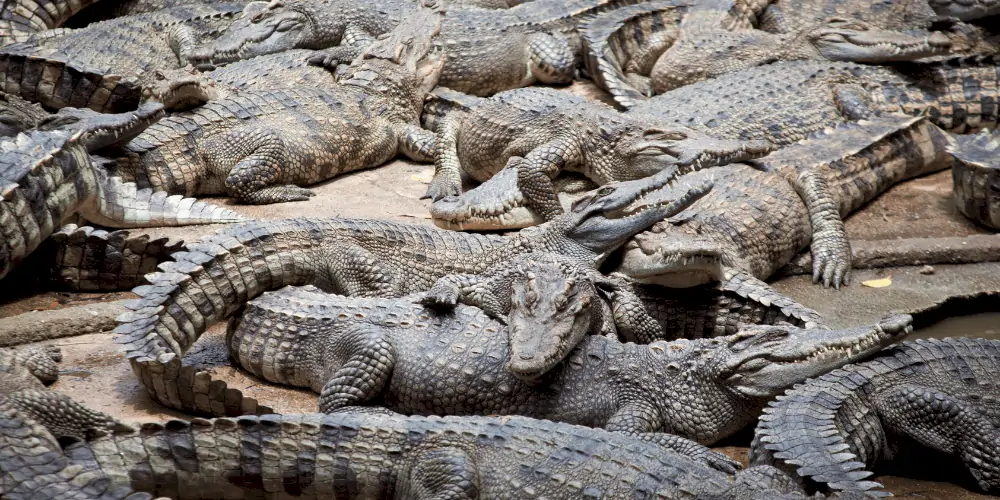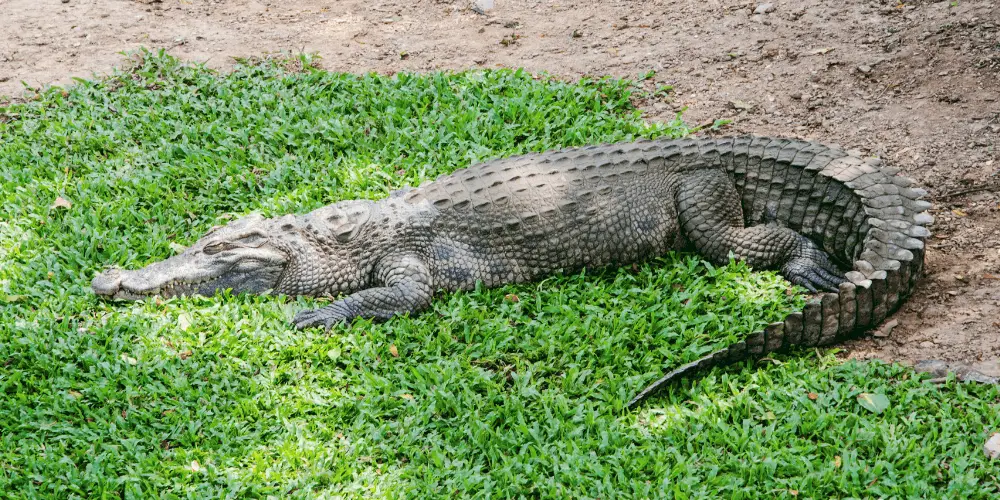You might find yourself pondering, can alligators and crocodiles climb trees? Well, the answer might astonish you.
Alligators and crocodiles can climb trees. Alligators and Crocodiles possess the physical abilities and instincts to climb trees for various reasons, such as basking in the sun, territory surveillance, escaping threats, seeking refuge, adapting to human encroachment, curiosity, and exploration.
Surprising Climbing Abilities
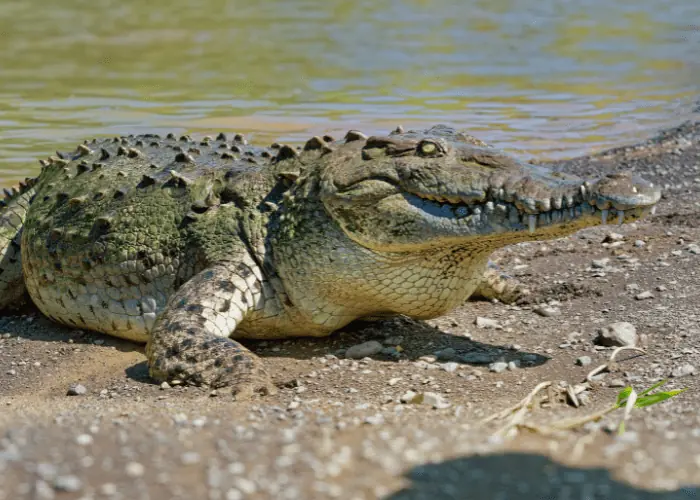
Contrary to popular belief, these fearsome reptiles have a surprising climbing ability.
While we usually think of crocodilians(any of an order of reptiles that includes the crocodiles, alligators, caimans, and related extinct forms) as aquatic animals lurking in the water, they can, in fact, climb trees.
But how exactly do they manage to do this?
Let’s dive in and explore their unique adaptations.
Reasons Why Alligators and Crocodiles Climb Trees

While it might seem unusual for alligators and crocodiles to climb trees, several compelling reasons exist for this surprising behavior. Let’s look at the factors that drive these reptiles to scale the branches above.
1. Basking in the Sun
Alligators and crocodiles are ectothermic creatures, meaning they rely on external heat sources to maintain their body temperature. Climbing trees allows them to access sunlit areas where they can bask and absorb warmth. This is particularly important in densely forested areas, where sunlight can be scarce at ground level.
2. Territory Surveillance
Climbing trees provides alligators and crocodiles with an elevated vantage point to survey their surroundings. From a higher position, these reptiles can monitor potential prey, predators, and rivals and monitor human activity in the area. This elevated viewpoint can be especially beneficial in environments where the water’s surface or the ground is obstructed by dense vegetation.
3. Escaping Threats
Alligators and crocodiles may climb trees in certain situations to escape potential threats. This could include predators, such as larger crocs or humans, or environmental hazards like floods or fires. By climbing trees, these reptiles can temporarily avoid danger and increase their chances of survival.
4. Seeking Refuge
Alligators and crocodiles may climb trees to seek refuge from competitors or territorial disputes. In densely populated areas, these reptiles may scale trees to establish their own space away from rival alligators and crocodiles. This behavior can be observed in younger, smaller individuals more vulnerable to aggressive interactions with larger, more dominant reptiles.
5. Adapting to Human Encroachment
As human activity encroaches on alligator and crocodile habitats, these reptiles may adapt to new environments. In some cases, this can involve climbing trees to escape from the disturbances caused by human activities such as construction, agriculture, or the recreational use of waterways. These reptiles can avoid confrontation with humans and minimize stress by seeking refuge in trees.
6. Curiosity and Exploration
Lastly, it’s worth considering that alligators and crocodiles may climb trees out of sheer curiosity and exploration. As intelligent and curious creatures, they may be motivated to investigate their environment and seek new food, shelter, or rest opportunities. Climbing trees can be a novel way for these reptiles to explore their surroundings and discover new resources.
5 Real-Life Examples of Tree-Climbing Alligators and Crocodiles
Unbelievable as it may seem, multiple incidents of tree-climbing alligators and crocodiles have been documented.
1. One example below occurred in Zambia, where a Nile crocodile was spotted resting in a tree branch above a river.
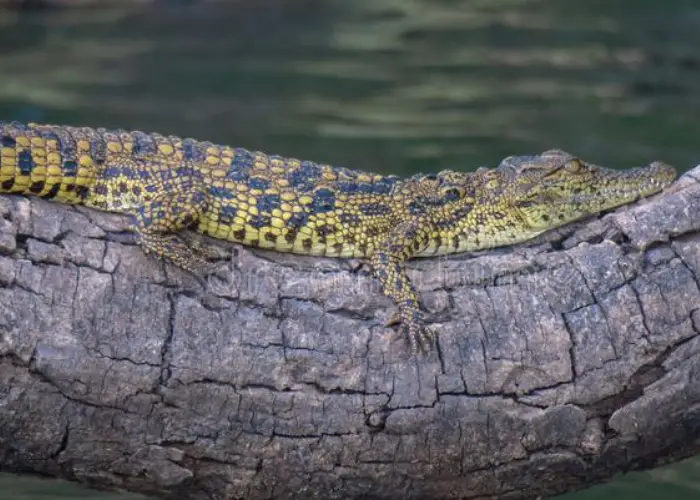
2. In another remarkable sighting, a Philippine crocodile (Crocodylus Mindorensis) was spotted basking in a tree in Mindoro, Philippines.

This rare event above, captured by Van Welsem in 2009 for Mabuwaya Foundation, showcases the surprising adaptability of these reptiles, defying our common perception of crocodiles as strictly aquatic or ground-dwelling creatures.
3. Fishermen near a Darwin, NT, Australia river were shocked when they witnessed an enormous crocodile climbing a tree in a highly unusual incident. The reptile, estimated to be about 3 meters long, was seen scaling the tree effortlessly, surprising the onlookers.
4. In 2014, researchers at the University of Tennessee studied this fascinating behavior.
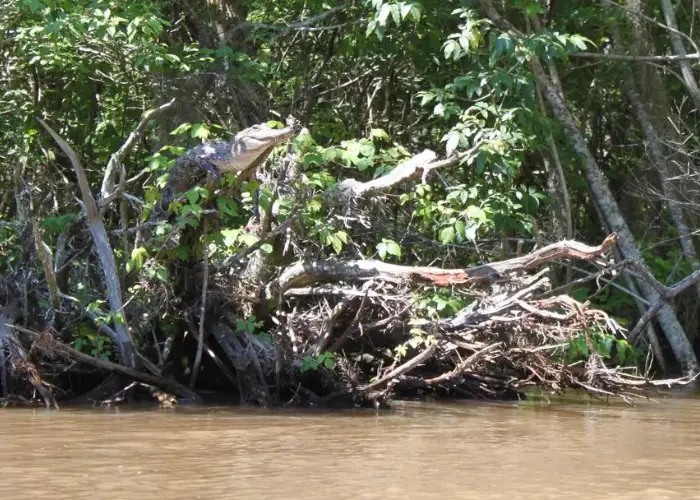
Their findings showed that alligators and crocodiles could climb trees to varying degrees.
Researchers assert that some can achieve a vertical climb, provided footholds are available for support.
5. The video below shows a large gator climbing a fence at Naval Air Station in Jacksonville, Florida.
Alligators and Crocodiles Tree-Climbing Techniques:

- Utilizing Claws: Alligators and crocodiles have sharp, sturdy claws on their feet that help them grip tree bark and branches. They use these claws to dig into the bark, providing the necessary traction to pull themselves up.
- Tail and Body Movement: While climbing, these reptiles rely on their strong tails and muscular bodies to maintain balance and generate upward momentum. They typically move in a zigzag pattern, using their tails as a counterbalance.
- Footholds: When climbing, alligators and crocodiles seek out tree trunks and branches with natural footholds, such as notches, grooves, or irregularities in the bark. These footholds help them maintain their grip and facilitate their ascent.
Types of Trees They Climb:

Alligators and crocodiles are not particularly selective regarding the types of trees they climb.
They are more likely to climb trees that provide easy access to sunlight, good vantage points, or refuge from threats. Some factors that influence their choice of trees include:
- Tree Trunk Diameter: Trees with a larger trunk diameter may be easier for these reptiles to grip and climb. However, they can also climb trees with narrower trunks if the tree provides suitable footholds.
- Branch Structure: Trees with solid and sturdy branches that can support the weight of an alligator or crocodile are more likely to be climbed. These reptiles may avoid trees with weak or thin branches that could break under their weight.
- Proximity to Water: Alligators and crocodiles are more likely to climb trees near water sources, allowing them to return to their aquatic habitat if needed quickly.
Average Tree Heights They Can Reach:
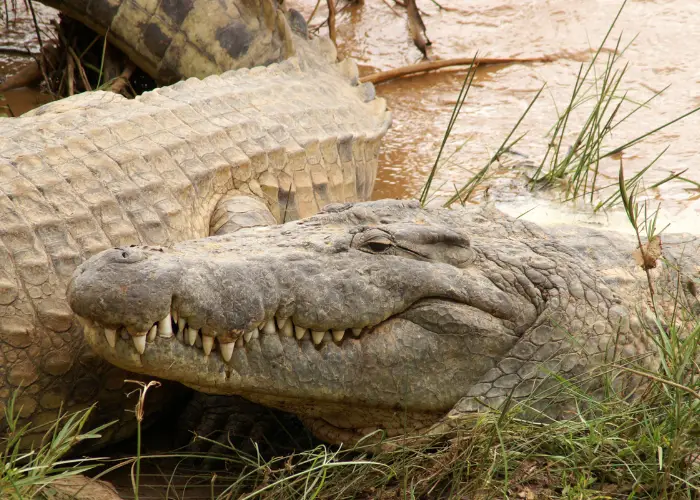
The heights that alligators and crocodiles can reach while climbing trees may vary depending on the species, size, and individual capabilities.
Smaller and more agile species, such as the Nile crocodile, have been known to climb as high as 10 feet (3 meters) or more, while larger species, like the American alligator, may only reach heights of around 6 feet (1.8 meters) due to their size and weight.
The Risks and Dangers of Reptilian Tree Climbing
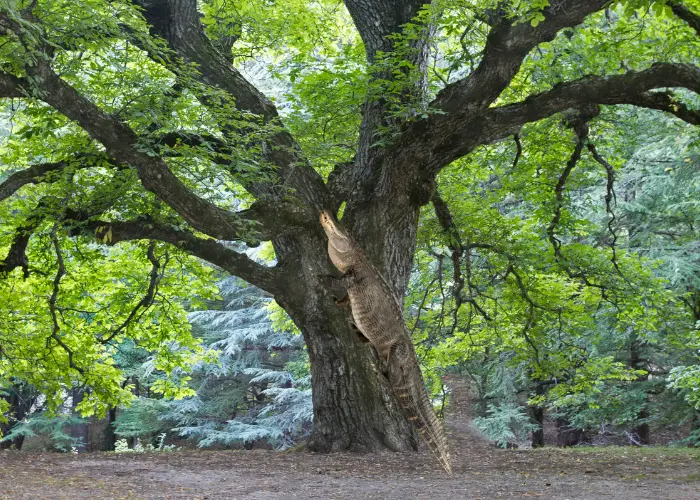
As fascinating as it is to learn that alligators and crocodiles can climb trees, it’s important to remember the potential risks and dangers associated with this behavior.
Firstly, tree-climbing crocodiles and alligators could threaten humans who unknowingly venture too close.
Secondly, climbing itself could be dangerous for the reptiles, as falling from a height can result in severe injuries or even death.
The Role of Human Activity in Reptilian Tree Climbing

Human activity has a significant impact on the behavior of these reptiles.
Habitat destruction and encroachment often force them to adapt to new environments.
Sometimes, this means climbing trees to escape threats or finding suitable basking spots.
Can We Learn from Tree-Climbing Alligators and Crocodiles?
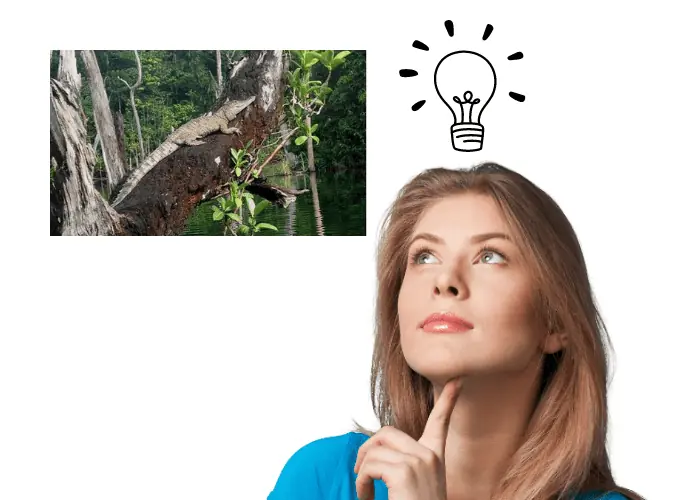
The incredible climbing abilities of alligators and crocodiles are a powerful reminder of the adaptability and resilience of nature.
By observing and understanding their unique behaviors, we can better appreciate the complexity of the ecosystems they inhabit.
Moreover, this knowledge can help us develop effective conservation strategies to protect these remarkable creatures.
A Call to Action: Promoting Conservation and Awareness

Now that we understand the astonishing climbing abilities of alligators and crocodiles, spreading awareness and promoting conservation efforts is crucial.
By protecting their habitats and ensuring their survival, we can continue to marvel at their fascinating behaviors and learn more about the complex ecosystems they inhabit.
Please share this article with friends and family, and let’s work together to protect these amazing creatures and the environments they call home.
Further Research and Exploration

If you’re intrigued by the tree-climbing abilities of alligators and crocodiles, consider delving deeper into this topic.
A wealth of research is available, and scientists continue studying these reptiles better to understand their behaviors and roles in their ecosystems.
As you embark on your journey of discovery, remember that knowledge is power.
Educating ourselves and others can positively impact the world and help protect these remarkable creatures for future generations.
The Wider Implications: Understanding Our World

The fascinating truth about alligators and crocodiles climbing trees is more than just a quirky fact.
It’s a testament to the incredible diversity and adaptability of life on Earth.
By studying these reptiles, we gain valuable insights into the workings of our planet and the intricate balance of ecosystems.
So, the next time you ponder the world’s wonders, remember the tree-climbing alligators and crocodiles.
They are a powerful reminder of the incredible, awe-inspiring nature of our planet and its inhabitants.
Final Thoughts:
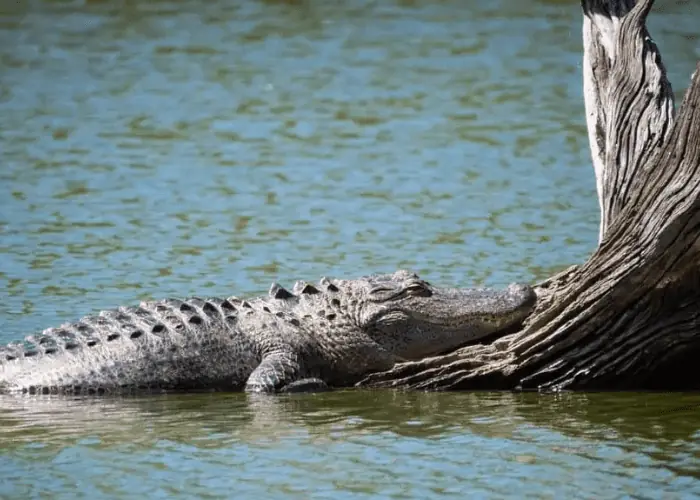
These fascinating reptiles possess remarkable adaptability and have developed unique ways to survive and thrive in their environments.
Next time you find yourself near a body of water where alligators or crocodiles might reside, don’t forget to glance up at the trees.
You never know when you might glimpse these incredible tree-climbing reptiles!
CHECK OUT MORE INTERESTING TOPICS BELOW:
- Can Crocodiles Regrow Limbs?
- Are Crocodiles Smart?
- How Long Can a Crocodile Go Without Eating?
- Are Crocodiles And Alligators Dinosaurs?
- How Fast Can a Crocodile Run?
- What is a Group of Crocodiles Called?
REFERENCES:
1. Liston, B. (2014, February 14). Crocodiles can climb trees: Researchers. Reuters. Retrieved April 23, 2023, from https://www.reuters.com/article/us-usa-crocodiles/crocodiles-can-climb-trees-researchers-idINBREA1D1LC20140214
2. Los Angeles Times. (2014, February 12). Crocodiles can climb straight up trees. Los Angeles Times. Retrieved April 23, 2023, from https://www.latimes.com/nation/la-xpm-2014-feb-12-la-sh-crocodiles-climb-trees-20140212-story.html
3. Chantelle Rodrigues For Daily Mail Australia. (2021, February 14). Unusual moment a huge crocodile climbs a tree leaving a fisherman stunned. Daily Mail Online. Retrieved April 23, 2023, from https://www.dailymail.co.uk/news/article-9260373/Unusual-moment-huge-crocodile-climbs-tree-leaving-fisherman-stunned.html


